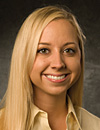Webinar: How Our Implicit Biases Affect Investigations
/GUEST BLOGGER
Emily Primeaux, CFE
Assistant Editor, Fraud Magazine
Imagine you’re driving a car and suddenly a squirrel darts out in front of you. What is your immediate reaction? You’ll swerve or break — or you may even accelerate. Do you think about swerving or braking in the split second that the critter crosses your car?
Let’s continue with the car example, but now you’re deciding to buy one. You spend time researching makes and models, and most likely, prices. Do you actively think about doing this research before going to the dealership?
These are the two examples that Bret Hood, CFE, Supervisory Special Agent at the FBI, used to explain the two systems of thinking as described by Daniel Kahneman in his book, “Thinking, Fast and Slow.” Hood described these scenarios in his top-rated session, "Why Let the Truth Get in the Way: How Our Implicit Biases Affect Investigations,” at the 27th Annual ACFE Global Fraud Conference in June. You can catch a rebroadcast in webinar format tomorrow at 11 a.m. EST. (And, you can also earn any lingering ethics CPE you need to complete for 2016).
In the first example with the squirrel, you’re reacting with a routine behavior that you don’t even think about. This is system one. In the second example at the dealership, you’re thinking before you act. This is system two.
“You spend more time in system one,” said Hood. “And that’s where your blind spots are.”
Hood went on to explain that these blind spots are implicit biases. Basically what this means, he explained, is that no matter what happens around us, our minds are consciously evaluating stimuli and making choices. These biases are going to impact your experiences — you can be primed in certain ways.
This happens because system one is far more efficient than system two. Before you have a chance to assess any situation, system one is leading you to a decision. And the more experience we have, the more likely we are to fall victim to implicit biases.
“If our implicit biases play a role in reaching the conclusion, this has a profound effect on the rest of the investigation,” said Hood. In a fraud examination, if you decide ‘I know this person did it,’ it’s hard to step away from that idea.
Hood explained that acknowledging that you might be susceptible to implicit biases will help you notice when your behavior and actions are being influenced by those same biases. “If our goal is to find the person who is responsible for the crime, acknowledging our own biases and finding ways to mitigate them will lead us to the person we truly seek.”
Find out more about Hood's webinar, which will air tomorrow at 11 a.m. EST, as well as three other top-rated speakers to be featured over the next three weeks in the ACFE's All-Star Webinar Series.


